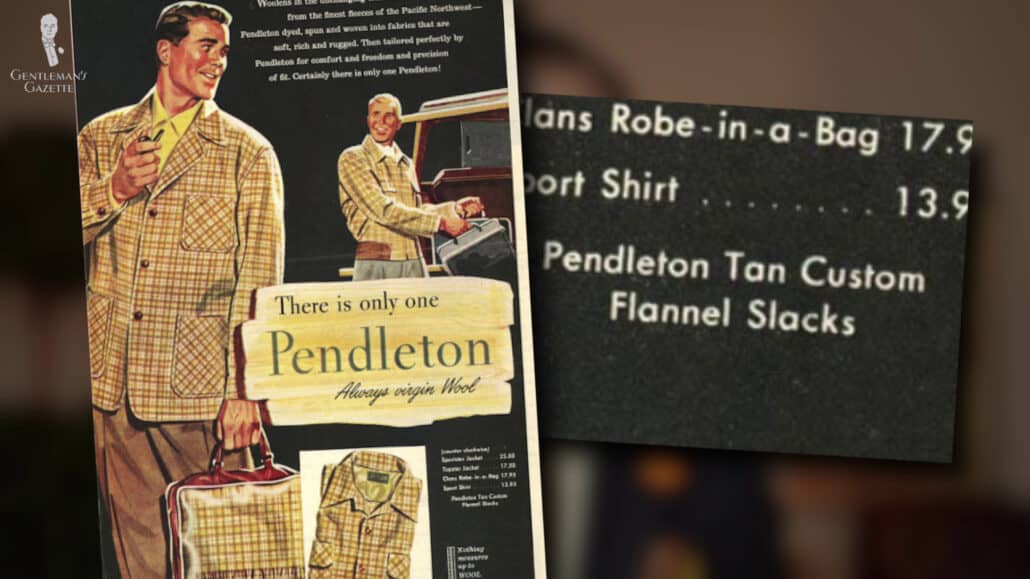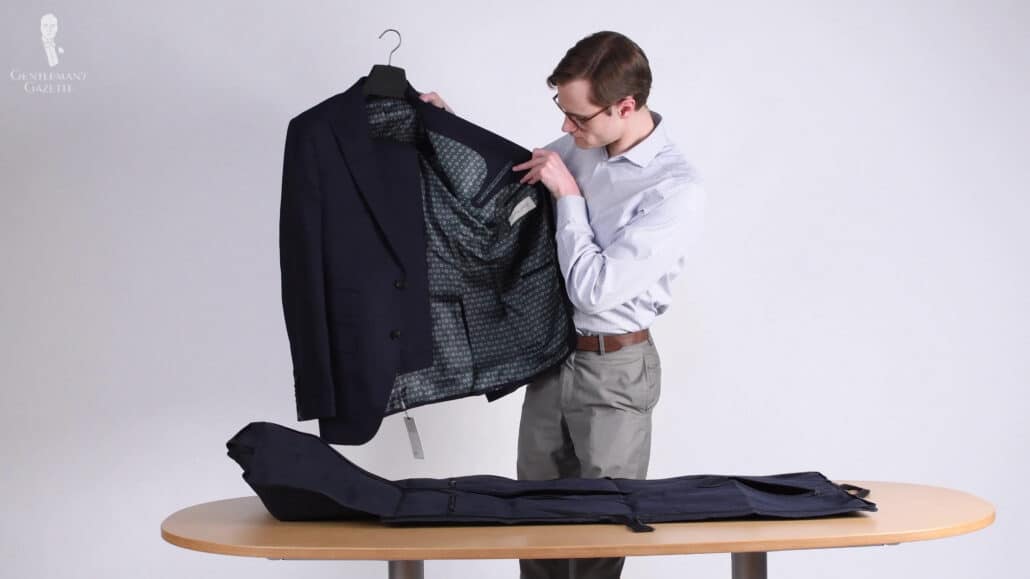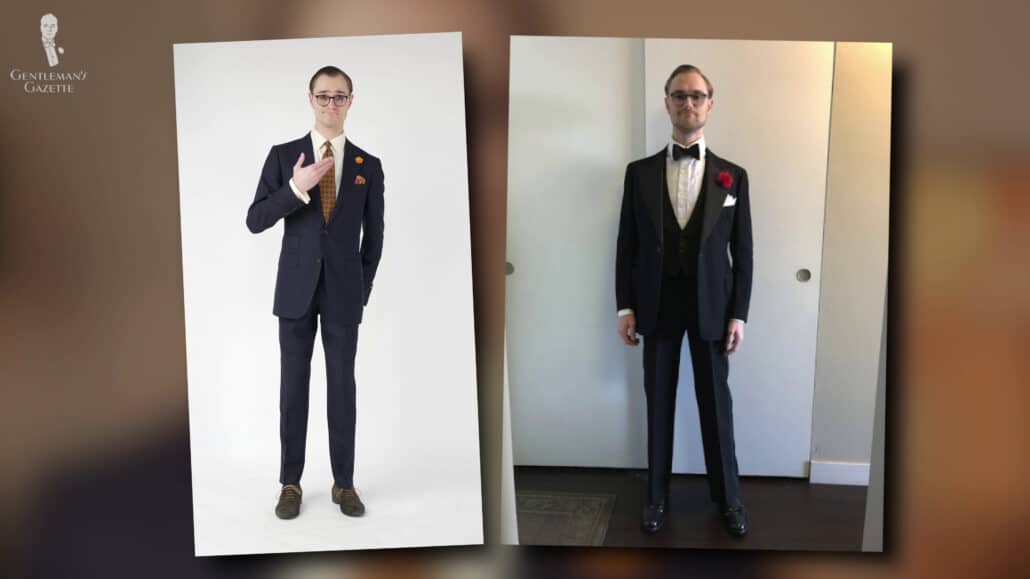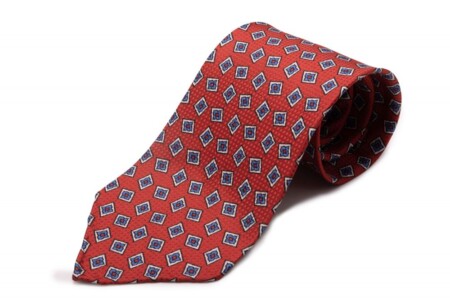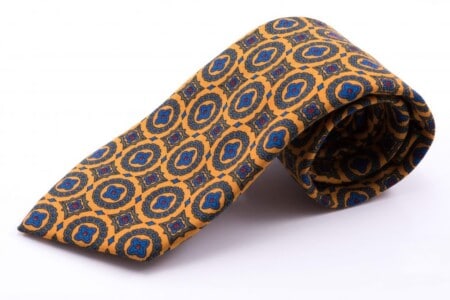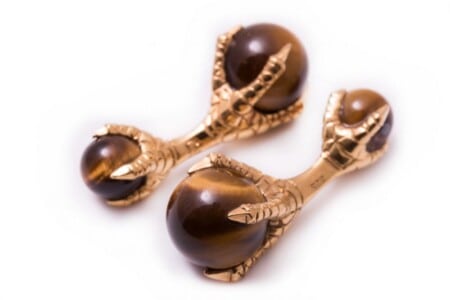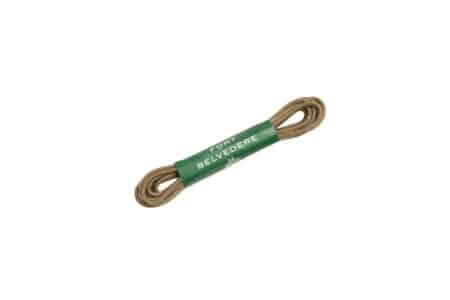It’s likely that you’ve encountered the word “custom” when looking to make a purchase, especially when it comes to clothing. The term is thrown around in the menswear space quite frequently, but with this use (or perhaps, overuse) comes ambiguity and a good deal of hype. Today, we’ll determine whether “custom” menswear has truly magical qualities, or if it’s just a myth!
Indeed, the word “custom” isn’t a menswear-specific term. After all, cars can have customized details; you can order customized stationery; houses can have custom elements, and the things inside them can be custom, like cabinetry or other furniture. The list goes on!
And as mentioned above, when it comes to the term’s use within the world of menswear, we don’t have to look any further than the Merriam-Webster dictionary entry on “custom,” where the definition, synonyms, and examples all relate the word to clothing.
Deconstructing “Custom” as a Buzzword
It’s critical, then, that we deconstruct the hype around the word custom, when it comes to menswear, and determine whether or not you can actually put your faith in it when you see it used in marketing. So, what is the hype, then? Honestly, you’re going to see the word “custom” pop up more and more wherever menswear is involved.
Mostly, the term is used to present a feeling of premium quality. This is because the generally accepted convention is that anything which is custom is going to differ from that which is available to the general population, and is therefore special, unique, or exclusive in some form.
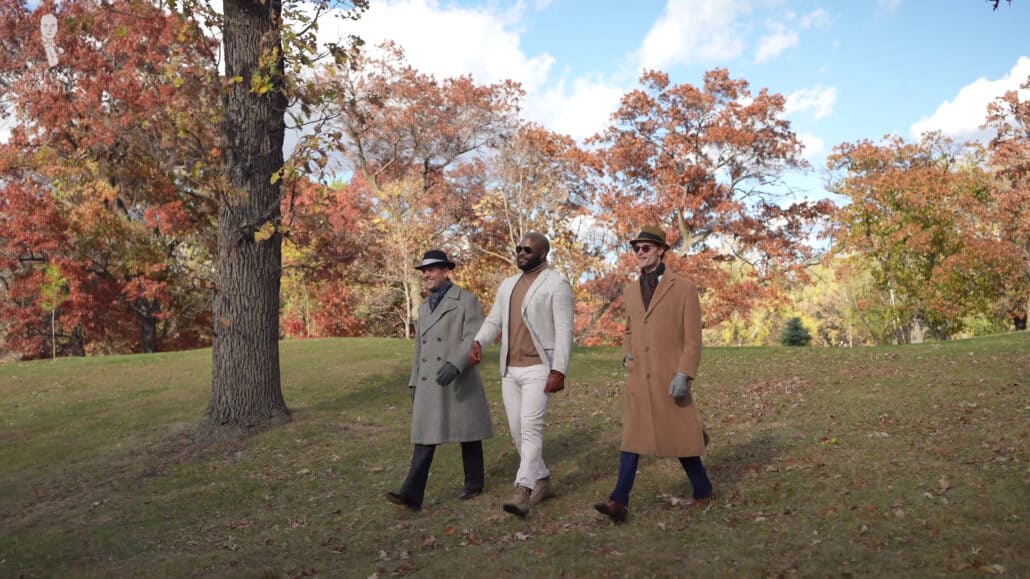
Along with this comes a certain idea of affluence, as many people believe items that are custom will also necessarily have to be expensive. Given these associations with exclusivity and wealth, then, it’s probably only natural that you see the word “custom” as much as you do, when it comes to menswear marketing.
In fact, the term is so prevalent now that when one of our scriptwriters, Jack Collins, was doing research for another post, he encountered an advertisement for Hockerty custom dress shoes, and after being intrigued by this pop-up ad, Jack found that Hockerty also offers custom suits, custom shirts, custom trousers, custom blazers…custom pretty much anything!

Hockerty also made sure to mention their “Perfect Fit Guarantee,” but at the same time, they did note that you may have to get things altered or remake them entirely. Setting the somewhat paradoxical nature of those specific claims aside for a moment, though, Hockerty isn’t alone in how they’re using the word “custom” in their marketing.
Perhaps the most well-known adopter of the “custom” moniker when it comes to their own offerings is Indochino. Starting out in 2007 as an online retailer for made-to-measure menswear, they now offer an in-store experience in more than 60 locations across Canada and the US, with custom clothing at the heart of their business since day one.
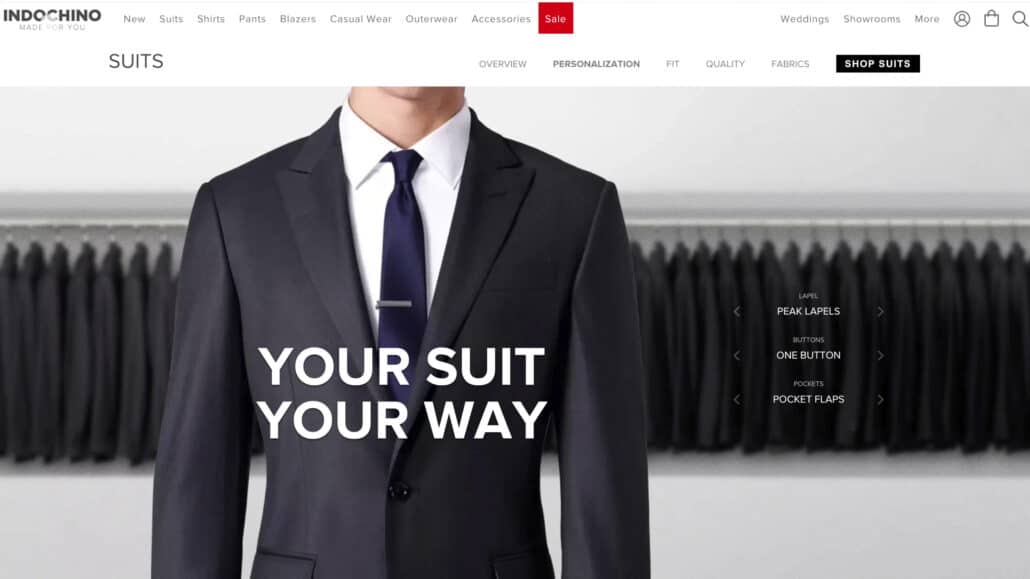
Both Hockerty and Indochino, then, pride themselves on offering a service where you, as the customer, can select your clothing’s details and measurements before it’s made.
Another popular brand for us to mention at this point would, of course, be Suitsupply, who offer both a similar made-to-measure experience, which I underwent to get the suit pictured below, but also what they call their Custom Program.
This program, though, is actually less customized overall than the made-to-measure experience I went through, as in the case of the program, you simply select a few key details to change on a garment that is then delivered in a ready-to-wear stock size.
So, even though the user experience and the degree of customization vary between these three retailers, the key takeaway is that all of them are focusing on three things in their marketing: the fact that you’re getting a quote custom garment, at a low price, and with a quick turnaround time.
Conversely, and as we’ve discussed in other posts, most people are aware that getting a garment made fully bespoke is a much more expensive experience and comes with a significantly longer turnaround time on average.
It seems only natural, then, that in today’s world of one-day shipping, heightened convenience, and greater choice on the market, companies want to offer a faster and cheaper service while still retaining a so-called “premium” edge.
Has “Custom” Always Been Used This Way?
To understand whether going “custom” is truly the best choice, let’s take a minute to give a historical overview of how the word “custom” has previously been used in menswear marketing. If we look back to the early and mid-20th Century, in the so-called Golden Age of Menswear, we’ll see that the use of the term “custom” in menswear marketing actually isn’t anything totally new.
It seems that from around the 1940s, we can see the word “custom” being used more often in advertisements, again, to promote a sort of premium feel to a product. In an advertisement for Wright Arch Preserver shoes, for example, the Duke model is “custom styled in brown or black calf.”
By using that language, it certainly does sound as though the company is putting extra effort into each pair of shoes, reinforcing the quality that comes along with “custom.”
In another example, the Daroff brand advertises worsted wools for their Botany 500 line, which are “tailored with the quality and custom details that give your appearance the distinction you want.” Here, of course, the words “quality and custom” are quite literally put together. Though what exactly constitutes “custom” isn’t really made clear, the feel of exclusivity is apparent.
Looking at another example from woolen manufacturer Pendleton, we can see the ability to purchase “tan custom flannel slacks.” The use of the term is especially clever here, as it’s not immediately apparent whether the color of the tan dye itself is custom, the wool is custom-made, or, indeed, the trousers are made custom for the consumer.
Also, we couldn’t take this little trip through menswear history without mentioning this 1947 ad for Jackman Custom Originals. In this case, of course, the word “custom” is right there in the brand name.
Though it was difficult to find any information as to whether or not the brand actually made fully custom clothing, what’s more likely and supported by other advertisements from the era is that the brand was making clothing to be sold in stores, more in a ready-to-wear mold.
So, “custom” is used especially vaguely in this instance, but we have to admit it makes the brand name sound more impressive than just “Jackman Originals!”
What Does “Custom” Actually Mean?
If we revisit our dictionary definition, we can see that “custom” is defined as “being made or performed according to personal order.” That seems simple enough, of course, but is it actually too simple a definition leaving, itself open to interpretation?
In order to try to add some specificity to what custom means, then, we’ve come up with our own augmented definition, which is as follows:
- Anything not available for purchase right away,
- Which requires a degree of human input (no matter how big or small that input may be),
- With a particular design or use in mind, and
- Which differs from what is already available for immediate use

To simplify that definition a bit and bring us back to a happy middle ground, it’s easiest to say that in terms of menswear, “custom” simply means anything that isn’t ready-to-wear. This, then, means that “custom” encompasses three levels in the world of menswear: made-to-order, made-to-measure, and bespoke.
In the case of made-to-order, you’re typically going to choose the material, details, and general sizing, and a garment will be made for you without any fitting done on your own body.
An example of this would be ordering shirts from a retailer like Charles Tyrwhitt, which offers a variety of collar and cuff measurements, as well as an overall variable fit scheme, but you don’t actually have to incorporate body measurements in order to get shirts.
Closely related is made-to-measure, where you’re going to choose the material and details, and then an overall template for a garment is going to be altered in line with your own body measurements for a slightly more personalized feel. An example of this would, again, be my Suitsupply suit,
When it comes to full bespoke, you pretty much have free reign as a tailor is going to take a great number of your own body measurements, and then translate them to a unique pattern, so you’ll truly have a one-of-a-kind garment. Of course, we’ve discussed all of these definitions in greater detail in another guide.
What’s The Issue With “Custom?”
As we’ve alluded to, the term has a broad definition and it becomes murkier the more you think about it. To illustrate this, we can actually bend our previous definition and say that even a ready-to-wear garment could be classified as custom in some circumstances.
After all, there are various post-purchase customization processes, like adding on different buttons yourself or even going to an alterations tailor, that would make a garment you bought off-the-rack “custom to you.”
Shoes would be another example. You could buy a standard pair of leather-soled dress shoes ready-to-wear, but then, have them customized with things like rubber half soles for added traction, metal toe taps for durability, or even just add a colorful pair of different shoelaces.
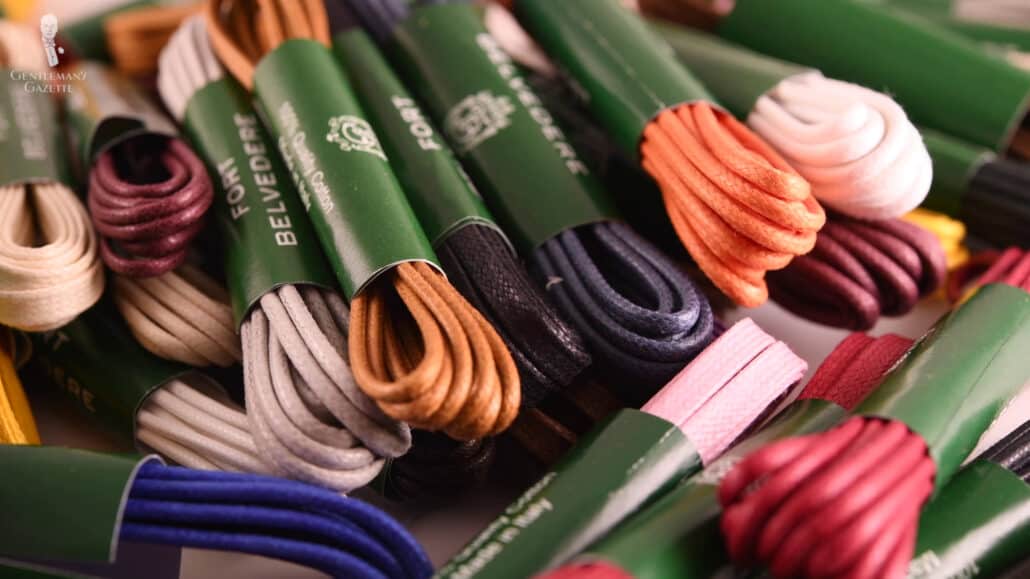
Given that humans are naturally asymmetrical but ready-to-wear clothing is usually produced on a symmetrical pattern, ready-to-wear clothing should be adapted or customized to fit you a bit better in most cases. You can see how even off-the-rack and ready-to-wear garments can eventually fall under the umbrella of custom.
Because they’ve undergone additional processes to be more specific to the user, they are now different from how they were originally sold. With all this in mind, the word “custom,” in relation to menswear, is one that seems simple at first but is actually so broad as to have almost no real meaning overall.
How Much Quality You Can Expect from A Custom Garment?
Because the word “custom” can be applied without reference, the quality you’re going to get can be a concern. Let’s look at two specific examples to get answers on how much of it your can really expect.
First, let’s take my Suitsupply suit. Again, this is a made-to-measure garment, which was fitted to my body measurements from an existing template. And, again, somewhat confusingly is outside of Suitsupply’s separate Custom Program.
While the quality of the fabric and the detailing in construction on the suit are nice, and the overall fit is decent, the suit isn’t perfect by any means. So, although I was promised a custom experience and a custom final garment, the results are a bit lackluster in terms of quality.
Meanwhile, as our second example, let’s turn to a piece that was just recently added to my own collection – a vintage three-piece tuxedo, which, as can be seen from its interior label, dates to 1937. There are slight asymmetries that I notice when putting it on that suggest that it was customized for the body of its original wearer.
Upon initial try-on, it’s not perfect, but indeed, I will have to have several alterations done so that the tuxedo will fit me better. In a sense, then, this tuxedo will ultimately be able to be considered doubly custom as it was customized for both its original owner and will be for me as well.
To return to our broader point, though, even though both of these ensembles could be considered custom in nature, the overall quality of their fit and construction varies significantly.
What To Look For When Purchasing “Custom” Menswear
We’re not saying that you should simply avoid the term “custom” uniformly because, after all, with how liberally it’s used in marketing these days, you’d probably be left with very few options overall. Instead, what we do recommend is that you search for greater specificity.
As a rule of thumb, makers and manufacturers that do high-quality custom work probably aren’t going to use the term “custom” much, if at all. This is for a number of reasons, including the fact that they’re proud of offering the specific service that they do, that they’ve likely trained hard to be able to offer that service, and that they don’t want to put off potential customers by being misleading.
Look instead for the more well-defined terms of made-to-order, made-to-measure, and bespoke, then, as in our experience, more honest marketing will garner a more honest end result. Of course, price alone isn’t an indicator of quality and, indeed, you can find high-quality garments for prices that definitely aren’t going to break the bank.
This is especially true, though, if you know specifically how to spot the hallmarks of a quality garment, and as an example, in another post, Raphael will walk you through how to identify a quality suit.
Overall, then, you should consider the hypothetical costs of manufacturing materials and labor when it comes to any purchase. Also, it’s important to ask yourself the question, “Why am I going custom?” In other words, examine what is it about the term “custom” that you find appealing for your potential garment?
Is it just about the cachet and status of being able to say it’s custom when people ask you about the new garment? Furthermore, have you checked to see if there are reviews from other customers that will speak to an overall level of quality about the garment? Also, could you achieve what you’re hoping to in another way?

For example, getting high-quality ready-to-wear garments or having something already in your wardrobe altered to fit you better. Remember that in this latter case that will make the garment custom to you, and it’s also going to be both the most budget-friendly and the most environmentally sustainable option.
“Custom” Menswear: Myth or Magic?
Overall, we’re going to sit more on the side of “myth” with today’s term. As we’ve explored, it’s so widely used in various marketing materials and applied to so many different kinds of processes that its definition is vague and wildly variable in quality.
Most often, the term is used in conjunction with garments that are offered at a fast turnaround time for a low price, which means corners are likely going to be cut and you’ll end up with an inferior garment. With such a wide and varied use, it’s impossible to say that all “custom” clothing is going to be of good quality.

Does this mean, conversely, that anything that is marketed as “custom” is automatically going to be bad? No, not necessarily–but remember that in most cases, things marketed with more specific terms like made-to-order, made-to-measure, or bespoke, are going to be better bets in terms of high quality.
If you stick with a more well-defined process, then, it’s more likely that your end result is going to be truly magical.
Outfit Rundown
In today’s video, I’m accordingly wearing a few different garments, which can fall under the wide umbrella of custom. Chief among them, of course, is my navy blue Suitsupply suit, which we’ve already discussed in a fair amount of detail. Also, under the custom umbrella today are my shoes, and they might even fall into that doubly custom category, since I designed them myself on the Undandy website, and then further augmented them when I got them with Fort Belvedere laces.
My Charles Tyrwhitt shirt made-to-order and, therefore, also possibly custom is in a pastel yellow color and a twill weave, and into its French cuffs, I’ve got inserted our gold-plated sterling silver eagle claw Fort Belvedere cufflinks with tiger’s eye as the stone to reinforce that yellow, orange, brown feel.
Also from Fort Belvedere today are my charcoal and orange shadow striped socks, which read as a brown from a distance, my orange exotic Caribbean boutonniere, and my tie in wool challis in a sunflower yellow color with green blue and red accents in its pattern. Rounding out the look today is a relatively new addition to our shop, a double-sided silk pocket square featuring a motif of pheasants on one side and a large paisley on the other. This one predominantly features tones of yellow and orange, but it’s one in a range of four that we’ve now introduced to the shop. So, you can take a look at these new pocket square designs, along with the other Fort Belvedere accessories I’m wearing, and a wide host of others, by visiting the Fort Belvedere shop.









